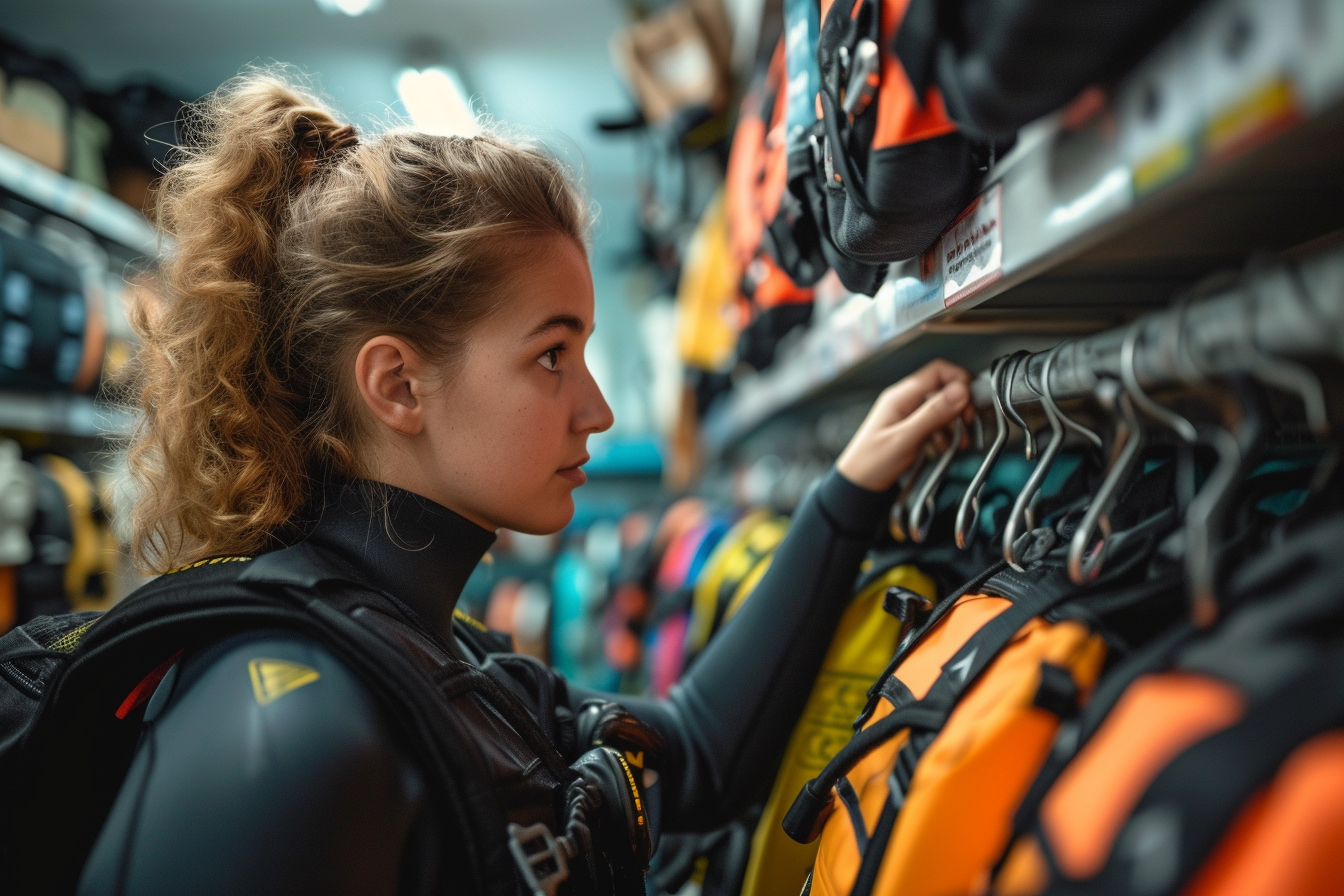A well-chosen wetsuit is like a second skin—an indispensable ally that can greatly enhance your diving experience by providing warmth, protection, and comfort underwater. Your selection process should be as meticulous as preparing for a dive, as the right wetsuit can be the difference between an extraordinary dive and an uncomfortable excursion. This article delves into the key considerations and practical advice for divers in search of their perfect wetsuit.
Understanding wetsuit material
The primary purpose of a wetsuit is to insulate your body, minimizing heat loss while submerged in water. Modern wetsuits are typically made of neoprene, a synthetic rubber that traps water against your skin. This water is then warmed by your body heat, forming a protective layer. Neoprene comes in various thicknesses, usually ranging from 2mm to 7mm, which determine the suit’s capacity for insulation. The thicker the neoprene, the warmer the wetsuit will keep you, though at the expense of flexibility.
Determining the right thickness
Choosing the appropriate thickness of your wetsuit is essential and is influenced by the water temperature you plan to dive in. Generally, water temperatures above 25°C (77°F) might only require a thin suit or even a skinsuit for abrasion protection. For cooler waters, around 18°C to 24°C (64°F to 75°F), a 3mm wetsuit may be sufficient. When temperatures drop to between 10°C and 17°C (50°F to 63°F), a 5mm to 7mm wetsuit is often recommended. Regardless, divers must consider their personal tolerance to cold as well as dive duration.
Fit and comfort
A perfect fit is paramount when selecting a wetsuit. An improperly fitting suit can lead to water flushing, wherein cold water continuously replaces the layer of warm water inside your wetsuit, reducing its efficiency. A snug fit without constricting movement or breathing is what you’re aiming for. Pay special attention to the fit around the neck, wrists, and ankles, as these are common water entry points.
Flexibility is another crucial factor. Ensure that the wetsuit allows full freedom of motion for your arms, legs, and torso. Test the wetsuit by mimicking swimming motions; this is often overlooked in a fitting room but is vital underwater.
Style and design
Wetsuits come in various styles, each tailored to different diving conditions and preferences.
- Full suits: Cover the entire body and are ideal for cooler temperatures.
- Spring suits: Usually with short arms and legs, suitable for warmer waters.
- Shorties: Provide minimal coverage and are perfect for tropical climates.
- Semi-dry suits: Have seals around the wrists and ankles to minimize water flow, apt for cold water.
Each style has its own merits. For example, full suits offer the most thermal protection while shorties allow for greater ease of movement. Your diving environment will be a significant determinant in this choice.
Seam construction
The construction of a wetsuit, particularly the seams, can greatly affect its thermal protection and durability.
- Flatlock stitching is durable and comfortable, adequate for warm-water suits.
- Glued and blind-stitched (GBS) seams limit water entry and are good for cooler waters.
- Sealed and taped seams provide maximum warmth and are preferable for very cold conditions.
Seam technology is continually advancing, so researching the latest developments can prove beneficial.
Additional features
Modern wetsuits come equipped with a variety of features that can enhance functionality and convenience.
- Zippers can be positioned at the back or front; consider which is more comfortable for you to reach.
- Knee pads offer added durability for areas prone to wear and tear.
- Thermal linings can boost warmth without adding extra neoprene thickness.
- Integrated hoods are useful for cold water dives to preserve heat from your head.
When scrutinizing these features, think about how they align with the conditions you expect to encounter.
Eco-Friendly options
With a growing awareness of the environmental impact of diving equipment, many manufacturers are now offering eco-friendly wetsuits made from sustainable materials such as limestone-based neoprene or natural rubbers. These suits aim to blend performance with ecological responsibility. Consider investing in one if you’re environmentally conscious and looking for a greener diving gear option.
Maintenance and longevity
The longevity of a wetsuit isn’t solely based on its build quality. Proper care and maintenance can substantially extend the life of your suit. Thoroughly rinse your wetsuit with fresh water after each dive, dry it away from direct sunlight, and store it on a wide hanger to prevent creases. Consider wetsuit shampoos and conditioners designed to clean and maintain neoprene’s elasticity. A wetsuit that is well-maintained will serve you well for numerous dives.
Trying and testing
Frequent divers are advised to try on several wetsuits and test them in diving conditions, if possible. Remember that fit and comfort in the shop may differ from how the wetsuit behaves in the water. Rental options or test dives organized by dive shops can provide an invaluable opportunity to find what truly works for you.
Personalizing your choice, by considering not just the environmental demands but also your diving style and personal preferences, will lead to a more satisfying purchase. Some divers prioritize maximum warmth, others flexibility and range of motion, and some the ease of donning and doffing the wetsuit.
Each diver is unique, and therefore there is no one-size-fits-all solution. By taking the time to assess the factors mentioned above, divers can equip themselves with a wetsuit that not only fits their body but also their diving aspirations. A carefully selected wetsuit becomes more than just equipment; it becomes a trusted companion on all underwater adventures.
As the market for diving gear continues to evolve, incorporating new technologies and materials, staying informed will help divers make the best choices for their underwater pursuits. Armed with knowledge and a keen eye for detail, the quest for the perfect wetsuit becomes a journey in itself, one that defines the comfort and enjoyment of each dive.

Leave a Reply